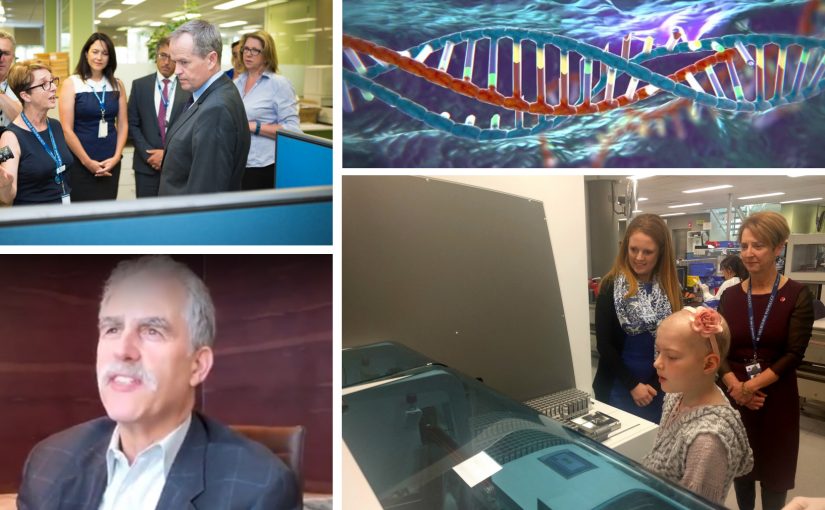We met 9-year-old Bridgette, a budding haematologist on her way to NASA.
At the age of 8 Bridgette asked for a microscope for Christmas and told her mum she wanted to be a haematologist. She was later diagnosed with leukaemia via a routine blood test and has been undergoing treatment for over a year.
We took Bridgette inside the lab where her diagnosis was made to meet the pathology team who conducted the test and see the original blood film that led to her being rushed to hospital one Friday evening.
Bridgette is also a keen inventor and has won a trip to NASA for creating a handy sticking plaster dispenser, congratulations Bridgette!
Genome.One became the first Australian institute sequencing whole human genomes, giving hope to people with rare genetic conditions
Professor Leslie Burnett told us that whole genome sequencing is pretty special. Scientists can look at all a person’s genetic information – about 100 times more data than was previously available to clinicians. “Barely a week goes by that we don’t come across something we haven’t seen before,” said Prof Burnett, “Put simply, this test can provide the answers that no other test is capable of.”
The first patients to undergo sequencing are those most likely to benefit; where all other testing has been exhausted and rare genetic conditions may be the cause of illness.
International experts praised Australian pathology
Despite being fast, accurate and an integral part of healthcare, pathology isn’t often in the public eye. However, while visiting Brisbane in September, American pathology expert Paul Epner wrote that Pathology is chronically undervalued and it needs to stop.
Another big name in the pathology world, editor of the widely read Dark Daily, Robert Michel visited Sydney in November and suggested that strategic use of testing could benefit the Australian health budget, in short; If you want to save money, test more, not less.
DNA leading the way
Amazing breakthroughs in DNA testing have happened this year and the progress in genetics could soon revolutionise how doctors test and treat cancer and other conditions with a genetic component. Genetic testing is already used to personalise medicine for certain cancers but some of this year’s most exciting advances are in ‘liquid biopsy’ techniques and the magical world of CRISPR.
We took 23 politicians into the lab to see the power of pathology
From the Leader of the Opposition visiting labs in 5 states to Senator Jan McLucas in Mackay seeing how valuable pathology is for remote communities, a total of twenty-three politicians joined us inside the engine room of healthcare in 2016.
Full details of all the parliamentarians who have toured pathology labs are available on our politicians page.

